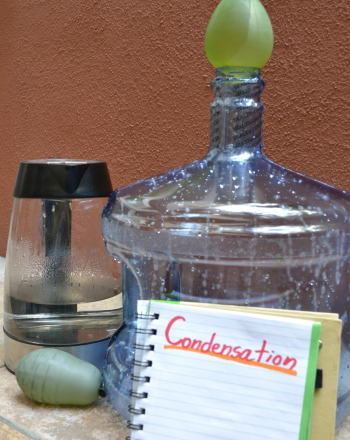
Cargando...
Que pode fazer?
224269 materialEducativo
textoFiltroFichatipo de documento Física - Experimento/Lab
Sobre este recurso...

Water molecules are busy dancing around all the time. But the dance really gets interesting when you add heat to them.The hotter molecules get, the faster they move, turning from water to steam. And when liquid water turns to gas, not only do the molecules move really fast, but they get spaced so much farther apart that they generate pressure by pushing on everything they come into contact with. Take the heat away from that steam, and it becomes liquid water again. This is called condensation.Ever wonder where those little drops of water that form on the outside of your cold can of soda come from? That’s condensation! The cold aluminum can causes water vapor in the air to cool down and form tiny beads of water on the can’s surface. The molecules in these beads of water are grouped far more closely together than when they were in their gas phase. So, in an enclosed space, what kind of effect do you think condensation would have on pressure?
It is an educational content by education.com.
By clicking on the title of this resource, you will be redirected to the content. If you want to download the project, you just have to join the website, which now is for FREE.
Conteúdo exclusivo para membros de

Mira un ejemplo de lo que te pierdes
Autores:
Categorias:
Etiquetas:
Fecha publicación: 12.5.2016
Respeita a licença original do recurso.
Deseja fazer um comentário? Registrar o Iniciar sessão
Si ya eres usuario, Inicia sesión
Adicionar ao Didactalia Arrastra el botón a la barra de marcadores del navegador y comparte tus contenidos preferidos. Más info...
Comentar
0